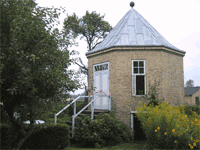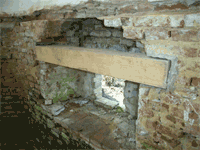Fungal attack averted despite unauthorized treatment
With the help of ProtoxSvamp have succeeded in preventing new fungal attacks in a listed garden house in the Museumshaven in Christiansfeld. The remarkable thing about the project is that it has not been carried out in the correct workmanlike way, in short, they have skipped where the fence is lowest in order to save money.
After removing the infested log layer in the garden house floor as well as a window lintel, the brickwork was brushed off to remove loose fungal mycelium. After this, the masonry and support were saturated with ProtoxSvamp. In addition, a new, non-impregnated window lintel was put in as a control.

| The old garden house in the museum garden |

| Real house fungus in the log layer |
Three years after the repair, a control visit in early summer 2007 shows that no new attacks of real house fungus have occurred.

Unimpregnated window lintel
laid in the fungal attack remuneration

End piece of window lintel
after 3 years in brick and mortar remuneration
Usually, it is expensive to fight real house fungus, because you go about it thoroughly. If you had followed the book, you would have done this:
All brickwork is cleaned of loose plaster, joints are scraped out, after which half the prescribed amount of fungicide is applied. The masonry is then grouted or plastered and the other half of the fungicide is applied. New woodwork that is inserted into masonry must be pressure impregnated (class A or equivalent) and all cut surfaces in wood must be saturated with an approved fungicide.


